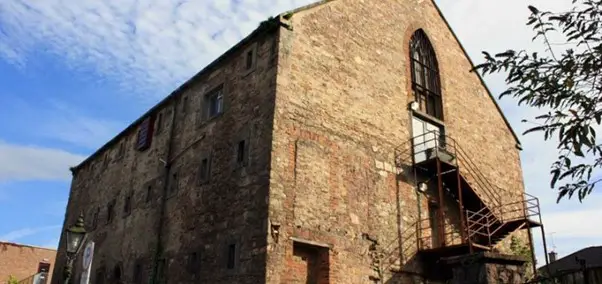You may be a model citizen today, but would you have been in the past?
You don’t need anyone to tell you that a lot can change in a century or two. Even without knowing the details, you can imagine that the Wexford of the nineteenth century looked very different to the Model County we know so well today. What may surprise you however is what has changed in the realm of crime and punishment. While much of the crimes bear similarities to ones committed today, there are certainly some standouts that remind us just how much Wexford has changed over the years.
Wexford prison records give us fascinating insights into the sunny South East’s criminal history. Many of the records make reference to Wexford Gaol, the now-defunct prison of Wexford that resides on Hill Street.
The prison, built at the beginning of the nineteenth century in 1812, was once host to a myriad of Wexford criminals of every descriptor. The gaol had approximately 60 cells which were enclosed within walls that stretched over 20 feet high.
Wexford Gaol ceased to become a prison in 1903 and later became a military barracks following its take over by the Free State Government in 1921. Today, the building is home to the Wexford Campus School of Art Design and the Wexford Chamber of Commerce.

You’re probably wondering at this point; what landed you a stay in Wexford Gaol in the nineteenth century? Well, while there has been executions held at the prison, most of the criminals who resided at the gaol over the years had landed themselves there by committing petty crimes such as vagrancy or public indecency.
Unsurprisingly, a crime that appears to unite the nineteenth and twenty-first centuries is the crime of theft. Wexford Gaol was home to many people accused of theft in its tenure as a prison.
The majority of the items stolen in the nineteenth century were staples that many of us take for granted today. Examples of these items include potatoes, stockings, bedsheets and wheat.
There were also some more peculiar items stolen as recorded in the Wexford Prison Records. For example, records show that on the 23d of May 1883 a woman named Elizabeth Kelly was arrested after being found in possession of a stolen petticoat.
Another noteworthy incidence of theft was the arrest of Michael Brien, Michael Nolan and Andrew Treacy for stealing whiskey from a storage facility in the New Ross Workhouse.
Even petty theft could earn you some time in Wexford Gaol, as evidenced by Patrick Murphy who was sentenced to seven days in jail after he stole a ‘tin of ale’ from Cherry’s Brewery in New Ross.
Some people even became regulars at the gaol. One such person was Mary Sloane, a Dublin-born woman living in Gorey who was imprisoned for multiple crimes in the 1880s such as drunkenness, larceny and disorderly conduct.
More bizarre incidents where people were sent to Wexford Gaol included Joseph Nugent getting a seven-day prison sentence for drunkenness and Mary Lyons receiving a fourteen-day sentence for breaking glass.
Some imprisonments even had significant political consequences. A famous example of this would be the arrest of two Bunclody men over their failure to pay tithes to the Anglican Church in 1793.
Their arrest sparked a series of events that culminated in a minor rebellion in Wexford that preceded the more famous 1798 rebellion which followed shortly after. Sometimes known in Wexford as the ‘First Rebellion’, this event inspired the construction of the infamous Vallotton Monument. If you are interested in learning more about this rebellion, Wexford Weekly columnist Darragh Sinnott covered it in depth here.
While jail sentences almost appear as though they were handed out willy-nilly, they weren’t the only form of punishment handed out. As is common today, fines were also handed out for minor offences.
Finable offences varied wildly. Some interesting examples can be found in the Irish Petty Sessions Court Registers. This includes an incident in 1899 where William Flynn, John Redmond and William Black were fined for riding their bicycles on the footpath.
An equally interesting incident comes in the form of a fine issued to a John Byrne from Abbeydown. Byrne was called before the court because he was accused of allowing one of his pigs to wander out onto a public road. He was found guilty and fined one shilling.
Perhaps the most humorous crime recorded in the annals of Wexford history is covered by Nicky Rossiter in his book The Little Book of Wexford.
In his book, Rossiter discusses an event where a man named Nicholas Kinsella was fined ten shillings for the ‘furious driving of a horse and cart laden with fowl, at Cornmarket Wexford, causing people to flee for their lives on a public street’.
Read also:
Remember to submit your news to Wexford Weekly! To advertise on our socials or website, email our team at info@wexfordweekly.com


